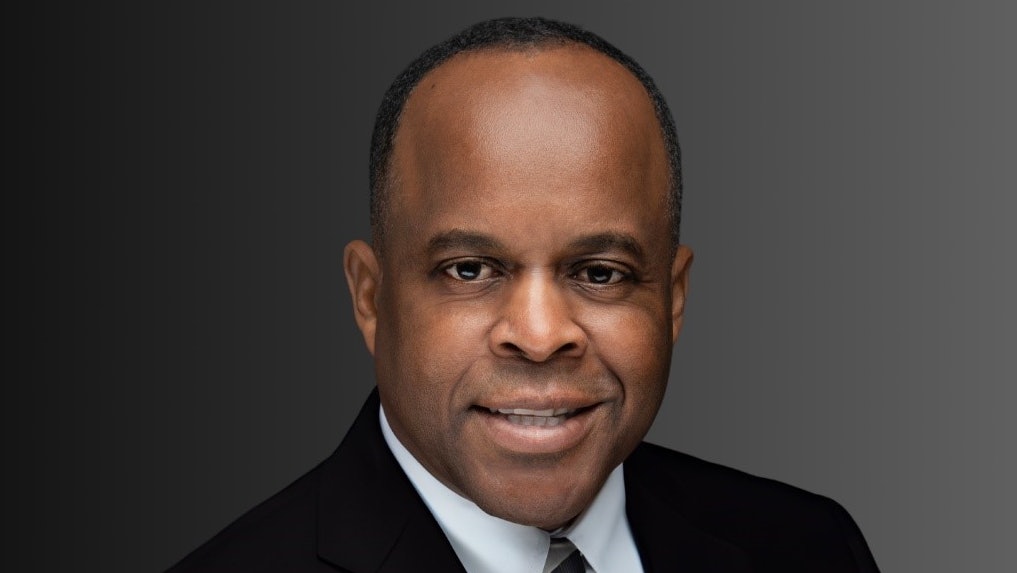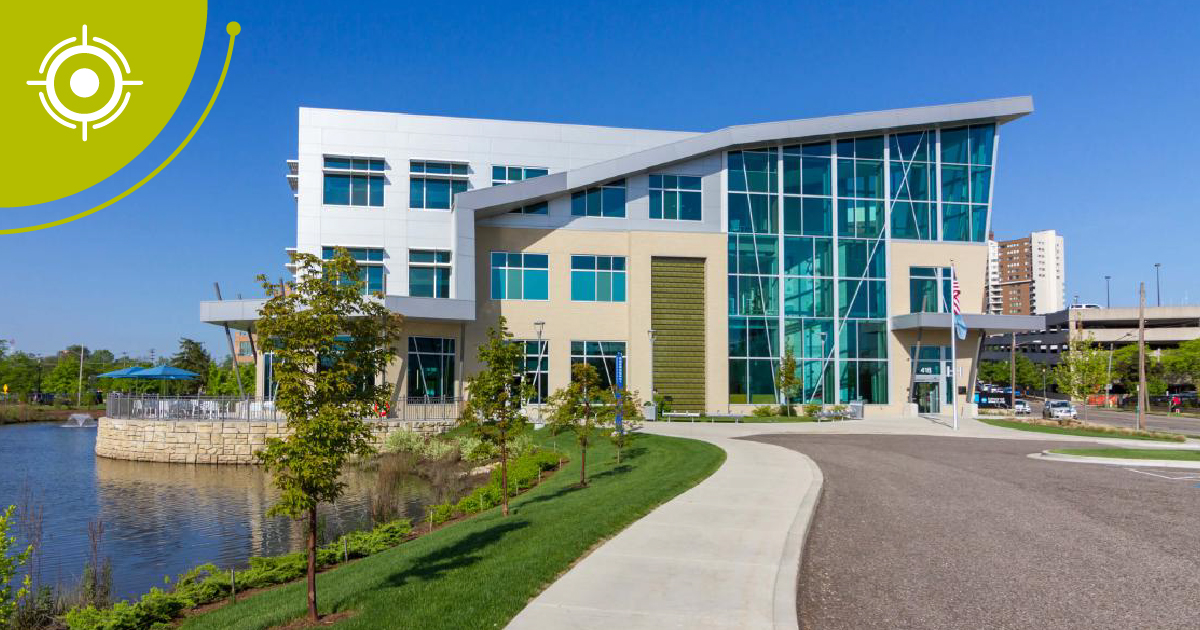As I reflect on my journey through higher education, I find myself looking back on a career that began in the small, rural community of Calhoun in Lowndes County, Alabama. It was there that I first understood the profound impact that education could have on a person’s life.
This foundational experience shaped my path through various educational and leadership roles, leading me from Alabama A&M University to Virginia State University to Indiana University of Pennsylvania and ultimately to significant leadership positions at institutions such as the University of Maryland Eastern Shore, Middle Tennessee State University, Western Illinois University, and Central State University. This article serves as both a personal narrative and a broader examination of the evolving landscape of higher education.
 Dr. Jack Thomas
Dr. Jack Thomas
Effective leaders understand that emotional intelligence is essential for navigating the complexities of higher education with authenticity and empathy. Dr. Freeman Hrabowski, president emeritus of the University of Maryland Baltimore County, aptly says, “By understanding human behavior and our values, we develop a moral compass that can guide our decision-making. In my 30-year journey as a university president, I learned that successful leaders are not those who simply speak quickly, but rather those who learn to listen carefully and ask thoughtful questions. It’s about showing genuine care and respect for others, regardless of their backgrounds or beliefs. Having led a campus with students representing over 100 different countries, I’ve witnessed firsthand the importance of embracing diversity and fostering a culture of inclusivity. My faith has been a source of strength throughout my career.”
My hope is to offer valuable perspectives for current and aspiring higher education leaders, emphasizing the importance of navigating change with a clear sense of purpose and a commitment to advancing the mission of education. During the reflection, I sought the expertise of several notable higher education and community leaders to acquire their perspectives on the various topics I have explored.
As I navigated through my undergraduate years at Alabama A&M University and then pursued advanced studies at Virginia State University and Indiana University of Pennsylvania, I witnessed the evolving dynamics of higher education. Each phase of my journey provided unique insights into the challenges and opportunities within academia. From the burgeoning focus on diversity and inclusion in the 1980s and 1990s to the rise of digital technology in the late 1990s and 2000s, I have been privileged to observe and contribute to significant shifts in the educational paradigm.
My tenure at institutions such as the University of Maryland Eastern Shore, Middle Tennessee State University, and Western Illinois University, and more recently, Central State University, has been marked by efforts to address the pressing issues of our time. Navigating these roles has not only been a testament to my commitment to higher education but also a reflection of the broader trends and transformations that have defined the sector.
Expansion and diversity in higher education (1980s-1990s)
During the 1980s and 1990s, higher education in the United States underwent transformative changes marked by a significant expansion in access and a growing emphasis on diversity. This period witnessed a remarkable increase in minority enrollments and the establishment of support programs designed to cater to diverse student bodies. The shift was not merely about numbers but about creating environments where all students could thrive.
Reflecting on my own journey during this era, from my undergraduate studies at Alabama A&M University to my graduate education at Virginia State University and Indiana University of Pennsylvania, I experienced firsthand the evolving landscape of higher education. The increased focus on diversity and inclusion was both a challenge and an opportunity. It required institutions to adapt their approaches, policies, and practices to better serve a growing and diverse student population.
Attorney, politician, and advocate, Stacey Abrams aptly captures the essence of this transformation in her comments: “DEI is essential to building educational institutions that are welcoming, fair, and free from discrimination and hate. Schools that reflect the diversity of America are best positioned to tap into the brainpower, resources, and cultural capital that each community holds. Without DEI in higher education, we risk undermining America’s cultural relevance, educational outcomes, and innovation; and will be unable to offer educational experiences that prepare students for an increasingly globalized world.”
The 1980s and 1990s were a time when higher education institutions began to realize the importance of diversity not just as a value but as a necessity for their survival and success. Dr. Keith Elder, president of Saint Xavier University, emphasizes this point: “The hallmark of universities and colleges is diversity. Higher education needs our campuses to be diverse to thrive intellectually, socially, and financially. Most of higher education would not exist without a diverse student body. With that at the forefront, it is incumbent on institutions to ensure the environment, policies, processes, and the classroom welcomes all. This requires intentionality and assessing all aspects to safeguard what is best about higher education: students, faculty, and staff who are different but learning, disagreeing, and growing for the betterment of society and self.”
As I reflect on my own experiences navigating these changes, it becomes clear that the era’s advancements in diversity were critical in shaping a more inclusive educational environment. These efforts laid the groundwork for future generations of students and leaders, emphasizing the need for continuous improvement and adaptability in higher education. This period was not just about expanding access but about fostering an environment where students could feel valued and supported in their academic and personal growth.
Rise of technology and online learning (late 1990s-2000s)
The late 1990s and early 2000s marked a pivotal shift in higher education with the rise of digital technologies and the burgeoning of online learning platforms. This period was characterized by an increasing emphasis on computer literacy and the integration of technology into both curriculum and administrative processes. The digital revolution began to reshape how students and faculty interacted with educational content and how institutions managed their operations.
As a faculty member and later an administrator at the University of Maryland Eastern Shore during this transformative time, I witnessed the impact of these technological advancements. The integration of technology into the curriculum opened new avenues for teaching and learning, allowing for more flexible and innovative educational experiences. Online learning platforms began to offer students the ability to access course materials, participate in discussions, and complete assignments from virtually anywhere, breaking down geographical barriers and expanding access to education.
Dr. Johnetta Cole, an esteemed anthropologist and educator, insightfully remarked, “The content of the curriculum should never exclude the realities of the very students who must intellectually wrestle with it. When students study all worlds except their own, they are miseducated.” This observation highlights the importance of ensuring that technological advancements in education do not overlook the diverse backgrounds and experiences of students. As we adopted new technologies, it was crucial to maintain a curriculum that reflected and respected the realities of our students, integrating their perspectives into the digital learning environment.
In line with this, Dr. Shirley Ann Jackson’s words resonate powerfully: “If you don’t aim high, you won’t go far. But I say that knowing that many young people have very difficult life circumstances and so on. But in the end, never let others define what your life can be.” Her message underscores the importance of ambition and self-determination, particularly in the face of technological and educational challenges. The rise of technology in higher education offered unprecedented opportunities, but it also required students and institutions to strive beyond traditional boundaries and aim for excellence despite obstacles.
As we navigate current issues and seek solutions, it is evident that the lessons learned from this era continue to apply. The rapid advancement of technology presents both opportunities and challenges in today’s educational landscape. Ensuring that digital tools are used to enhance, rather than replace, meaningful educational experiences remain a key focus. Institutions must balance technological innovation with a commitment to inclusivity and relevance, adapting to the evolving needs of students while upholding the core values of education.
In reflection, the rise of technology and online learning in the late 1990s and 2000s was a period of immense growth and change. It set the stage for the modern educational environment, where digital and traditional methods coexist, and where the lessons from this era continue to inform how we approach teaching and learning in an increasingly connected world.
Financial crises and their impact on higher education (2008-2010)
The 2008 financial crisis had far-reaching effects on higher education, ushering in an era of budget cuts, rising tuition fees, and an intensified focus on financial sustainability. As the global economy faltered, many institutions faced severe fiscal pressures that forced them to reevaluate their financial strategies and operational models. This period was marked by significant challenges, including reductions in state funding, increased financial strain on students and families, and a heightened need for institutions to find innovative ways to maintain their financial health.
During my tenure at Middle Tennessee State University and later, I observed the impact of the financial crisis on higher education. The crisis necessitated a strategic shift in how institutions managed their resources, prompting a renewed emphasis on fiscal discipline and innovative approaches to sustain operations. We were tasked with implementing cost-saving measures, exploring alternative revenue streams, and enhancing financial transparency to navigate these turbulent times effectively.
A notable educator, Dr. Michael Crow, president of Arizona State University, reflects on the period’s lessons and ongoing challenges: “In times of financial distress, the need for innovative thinking becomes even more pronounced. Institutions must adapt and transform their financial strategies to not only survive but thrive in an evolving landscape.” Crow’s insight highlights the critical need for higher education institutions to embrace innovation and adaptability as core components of their financial strategies, particularly during periods of economic uncertainty.
The lessons from the 2008 financial crisis remain relevant today as we continue to face economic fluctuations and budgetary pressures. The current landscape of higher education reflects a persistent focus on financial sustainability and strategic planning. Institutions are increasingly seeking ways to diversify their revenue sources, enhance operational efficiencies, and invest in long-term financial stability while balancing the need to keep education affordable and accessible.
In summary, the financial crisis of 2008 was a defining moment for higher education, shaping how institutions approach financial management and strategic planning. The experiences and strategies developed during that time continue to influence how colleges and universities navigate current financial challenges, underscoring the importance of resilience, innovation, and prudent fiscal management in ensuring the continued success and accessibility of higher education.
Crow, M. (2013). The Future of Higher Education: How Colleges Can Transform Their Financial Strategies. Arizona State University.
Growth of globalization in higher education (2010s)
The 2010s marked a transformative period for higher education as globalization began to take center stage. Universities across the United States and around the world embraced internationalization as a core component of their strategic objectives. This era saw a significant rise in global academic partnerships, student exchange programs, and an increasing influx of international students seeking educational opportunities abroad. Institutions were driven by the recognition that a global perspective is essential for preparing students for an interconnected world.
During this dynamic period, I was deeply involved in advancing the international profile of the institutions I led. At each stage of my career, from Western Illinois University to Central State University, I worked to forge partnerships with universities abroad, host international conferences, and develop programs that attracted students from various countries. These efforts were aimed at enriching the academic experience and expanding the global reach of our institutions.
As we moved forward into this new era, we faced the challenge of integrating diverse cultural perspectives and international insights into our academic framework. The growth of globalization brought opportunities but also required institutions to navigate complex cultural dynamics and differing educational standards. My approach was to foster an environment where global collaboration was not only encouraged but embedded into the fabric of our educational practices.
Reflecting on the current landscape, it is evident that the emphasis on globalization has only intensified. Institutions now must adapt to a world where international collaboration is crucial for research, innovation, and cultural exchange. As Dr. John C. Hitt, president emeritus of the University of Central Florida, stated, “In today’s world, the ability to understand and navigate diverse cultures is essential. Higher education institutions must prioritize global engagement to remain relevant and effective in preparing students for the complexities of a global economy.” Similarly, Michael Crow, president of Arizona State University, emphasized that “globalization has redefined the landscape of higher education. Institutions must embrace international partnerships and provide students with opportunities to gain global perspectives, which are increasingly vital in our interconnected world.”
These insights highlight the ongoing need for institutions to engage with global partners and prepare students for a globalized workforce. The experiences and strategies developed during this era continue to inform how we approach internationalization and foster a more inclusive and globally aware academic environment.
Hitt, J. C. (2021). Global Engagement in Higher Education: Opportunities and Challenges. University of Central Florida.
Crow, M. (2013). The Future of Higher Education: How Colleges Can Transform Their Financial Strategies. Arizona State University.
Social movements and higher education (2010s-present)
The past decade has witnessed a surge in activism and social movements on college campuses, reflecting a broader societal shift towards addressing systemic inequalities and advocating for social justice. Movements such as Black Lives Matter and campaigns for gender equality have gained prominence, prompting universities to confront and address these critical issues within their communities. This period has been marked by a heightened focus on creating inclusive campus environments and fostering dialogue around diversity, equity, and inclusion.
During this transformative era, my leadership roles at various institutions required a nuanced response to the evolving landscape of social activism. At Middle Tennessee State University, Western Illinois University, and Central State University, I was actively involved in shaping policies and practices that aligned with the principles of justice and equality. These efforts included establishing support systems for marginalized students, promoting open discussions on social issues, and implementing initiatives aimed at fostering a more inclusive campus climate.
Recent developments such as the ongoing student protests demanding greater transparency and action on campus racial inequalities, and the NCAA’s decision to permit athletes to profit from their name, image, and likeness (NIL), illustrate the shifting priorities in higher education. These events highlight the growing influence of student voices and the need for institutions to adapt to changing expectations around equity and fairness.
As we navigated these challenges, it became increasingly clear that university leadership plays a crucial role in addressing social movements and advancing equity. Institutions must be proactive in engaging with students’ concerns and creating spaces where diverse voices are heard and valued. The work of leaders in higher education is not only about responding to immediate issues but also about embedding principles of justice and inclusion into the institutional culture.
Reflecting on the current state of social movements in higher education, it is evident that the commitment to social justice remains a central concern. As Dr. Johnnetta B. Cole, a prominent educator and advocate for diversity, stated, “The true measure of an institution’s commitment to social justice is not merely in its responses to current movements but in its ongoing efforts to embed equity and inclusion into every facet of campus life.” Similarly, Dr. Michael Sorrell, President of Paul Quinn College, noted, “In times of social upheaval, higher education institutions must lead with empathy and a deep commitment to justice, ensuring that their actions reflect the values they espouse.”
These perspectives underscore the importance of sustained leadership and institutional commitment to addressing social justice issues. As we move forward, it is crucial for universities to continue evolving and responding to the needs of their communities, reinforcing their role as agents of positive change and inclusivity.
Mental health and well-being
The increasing focus on mental health and well-being has become a vital concern in higher education, as institutions strive to address the complexities and pressures faced by students and staff. In recent years, universities have expanded mental health services, incorporating wellness programs designed to enhance the overall educational experience. This shift includes investments in mental health technologies, such as teletherapy and wellness apps, and providing faculty with training to better support students’ needs.
Dr. Barbara J. Johnson, dean of Perimeter College at Georgia State University, emphasizes, “Mental health and student well-being impact the success of students in and out of the classroom. It is imperative for institutions to consider wide-ranging strategies to support the well-being of all students including those who are enrolled online or working full-time jobs. Additionally, institutions should be attentive to the well-being of all employees. For example, institutions could collaborate with campus stakeholders to determine the right mix of activities and programs to support the well-being of faculty and staff.”
During my leadership roles at institutions such as Central State University and Western Illinois University, I have witnessed the transformative impact of prioritizing mental health. By integrating mental health initiatives into campus life, universities can foster a supportive environment that enhances both academic performance and overall well-being. Addressing these needs comprehensively ensures that students and staff are equipped to navigate the challenges of higher education while thriving personally and professionally.
In the current landscape, where mental health awareness continues to grow, it is crucial for institutions to adopt and adapt strategies that meet the diverse needs of their communities. From enhancing on-campus resources to exploring innovative technologies, the commitment to mental health and well-being remains a cornerstone of creating an inclusive and supportive educational environment.
COVID-19 pandemic and its effects (2020-present)
The COVID-19 pandemic brought unprecedented challenges to higher education, transforming how institutions operate on a fundamental level. When I began my role as President of Central State University in the middle of a global pandemic, the landscape of higher education was anything but stable. Navigating this turbulent period required not only quick adjustments but also a strategic approach to managing the myriad crises that emerged daily.
The shift to online learning for institutions around the world was immediate and massive, requiring rapid adaptation from both students and faculty. We had to ensure that our technological infrastructure could support this transition, while also providing comprehensive training to staff and faculty who were suddenly thrust into a virtual teaching environment. Financial strains were equally pressing, with decreased enrollment and increased costs for health and safety measures putting significant pressure on our budget.
In these challenging times, I focused on maintaining clear communication and providing strong support systems for our university community. Implementing robust health protocols, enhancing remote learning resources, and supporting our students’ and employees’ mental health became top priorities. The goal was to ensure that Central State University not only survived the pandemic but emerged as a resilient institution, capable of adapting to future challenges.
Leaders at universities around the world were thrust into survival mode, prioritizing immediate crisis management over the usual institutional advancements. This challenging period inevitably influenced the outcomes and conditions of many of these leaders, often leading to unfair assessments of their leadership as opposed to giving them a fair opportunity to demonstrate their capabilities under normal circumstances.
As we continue to navigate the pandemic’s aftermath, the lessons learned during this period are crucial. They remind us that effective leadership involves not only crisis management but also fostering a culture of adaptability and support. The ability to face such unprecedented challenges head-on has prepared us to better handle future uncertainties and reinforce the importance of flexibility and resilience in higher education.
Conclusion: Embracing transformation for a brighter future
As we reflect on the evolving landscape of higher education, from the expansion of diversity and inclusion in the 1980s and 1990s to the rise of technology and online learning in the late 1990s and 2000s, it is clear that our field has undergone profound changes. The financial crisis of 2008-2010 tested our resilience, while the growth of globalization in the 2010s highlighted the need for international engagement and collaboration. More recently, social movements and heightened activism have demanded that we create more inclusive and responsive campus environments, and the COVID-19 pandemic has forced us to adapt rapidly to unprecedented challenges.
Throughout these transformative years, one constant remains: the imperative to continuously evolve and respond to the needs of our students, faculty, and communities. Our collective journey reflects a commitment to embracing change, whether through integrating new technologies, fostering global connections, or prioritizing mental health and well-being.
In this ever-changing landscape, the lessons learned from these experiences call us to action. We must remain dedicated to ensuring that higher education is accessible, equitable, and adaptable. We must harness the power of diversity to enrich our institutions and prepare students for a globalized world. We must be proactive in addressing the financial and operational challenges that arise, and we must be steadfast in our support of mental health and well-being.
As we move forward, let us draw inspiration from the resilience and adaptability demonstrated throughout our shared history. Let us commit to leading with compassion and vision, ensuring that our institutions not only meet the current demands but also shape a brighter, more inclusive future for all. The path to success in higher education is not merely about navigating change but actively shaping it, driven by our values, our dedication to equity, and our unwavering commitment to the transformative power of education.
Dr. Jack Thomas is a veteran higher education administrator having led a number of institutions including Central State University and Western Illinois University.
#Navigating #Pathways #Success #Diverse #Issues #Higher #Education










